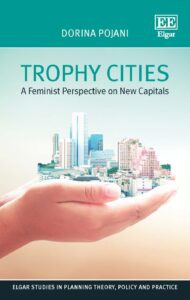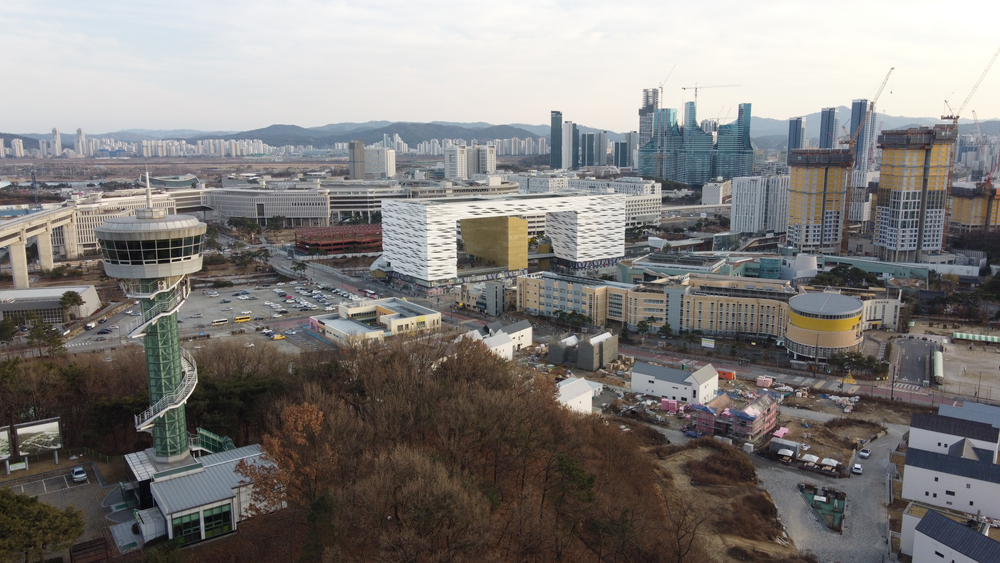Who designs cities? And who are they made for? In her book, ‘Trophy Cities:’A feminist perspective on new capitals,’ Associate Professor Dorina Pojani from the University of Queensland offers a fresh perspective on socio-cultural and physical production of planned capital cities through the theoretical lens of feminism.
She evaluates the historical, spatial and symbolic manifestations of new capital cities, as well as the everyday experiences of those living there, to shed light on planning processes, outcomes and contemporary planning issues. BroadAgenda editor Ginger Gorman asked Dorina. a few quesitons.
In a nutshell, what’s your book “Trophy Cities” about?
This book evaluates the planning processes and outcomes of seven new capital cities, spread across time and cultures: Canberra, Australia; Chandigarh, India; Brasília, Brazil; Abuja, Nigeria; Nur-Sultan, Kazakhstan; Naypyidaw, Myanmar; and Sejong, South Korea. I have approached my research from a feminist perspective, considering the role of gender in these cities. I am a hard critic of these dystopian megaprojects. I argue that they have been, for the most part, great planning disasters.
Why do we need to look at cities through a feminist lens?
Because the patriarchy is the common thread that connects these megaprojects in their shortcomings. All the other connections are tenuous. Major failures are evident in both democratic and authoritarian settings; in post-colonial nations and places that had long been independent by the time they created their new capitals; in places with a socialist legacy and those who were always capitalist; in countries where the population majority is Black, White, or Asian; in poorer countries and wealthier ones; in national or regional capitals; in early capitals and very recent ones; in capitals built in greenfield locations and those created as extensions to existing settlements; in capitals built during the modern and post-modern eras, and so on.
What are the (everyday) consequences if we don’t?
If we keep building cities that embody the patriarchy, we’ll end up with dreary, overpowering, underserviced, wasteful, and unaffordable places.
Instead of friendly, usable streets, we’ll have large, monumental spaces. Instead of public transportation and neighbourhood services, we’ll have cars and highways. Instead of bringing people together, our cities will exacerbate social and ethnic inequalities.
You’re not just asking questions through a feminist lens, but also questions about class, race, ethnicity and religion and how these things intersect. Why?
That’s correct. Not only does the patriarchal city oppress women as a broad group but it also pitches women against one another on the basis of class, ethnicity, religion, sexuality, disability, marital status, motherhood, occupation, political opinion, and other systems of exclusion and segregation.
Without a united global sisterhood, it is much harder to chip away at the patriarchy and the cities planning models it produces.
What are the patriarchal and colonial themes you’re exploring? (Why is it men who want to found new capitals)?
There are so many reasons. For one, new capital cities have been a key component in grand nation-building projects, and independence and nation-building have been, for the most part, male endeavours rather than inclusive ventures. Moreover, some new capitals have been built based on a militaristic and bellicose image of nationhood, which at times has veered on paranoia. For example, Naypyidaw and Abuja were the pet projects of army generals.
In championing the construction of new capitals, male politicians or government bureaucrats have cast themselves as benevolent patriarchs. And they have given free rein to a few handpicked male architects and planners to design these cities. This has resulted in cities that are, first and foremost, expressions of egomania.
One of Nur-Sultan monuments I visited contained the solid gold imprint of President Nazarbayev’s right hand, and visitors were invited to place their hand on to be granted a wish!

Associate Professor Dorina Pojani
Some motivations have also been economic. In the last three or four decades, the dominant economic order has been neoliberal globalization. Most of its front-runners have been well-educated, upper-class, wealthy men, leaving little space for women. The “new economy” is led by notoriously male-dominated sectors including finance and real estate.
Capitals cities have joined the international race to produce shiny urban design and architecture. For example, Sejong is aiming to become a prototype of the ‘ubiquitous eco-city’ (u-eco-city). However, this is really a marketing term that seeks to reinforce South Korea’s image as an international technology hub. Overall, there is little evidence that creating a new capital has been more economically beneficial to a nation than investing in the existing capital or peripheral cities would have been.
How do we throw all this off? What would cities look like if we planned them with a feminist lens? How would outlives be different?
Much feminist advocacy has centred on affordable housing, living wages, accessible transport, safety and security provisions, free childcare, affordable health care and education, participatory budgeting, political representation, gender quotas, gender impact assessments, and gender mainstreaming. These aspects are important and undeniable gains have been made. However, cities around the world are still planned, built, and managed based on traditional gender roles. Capitals, as national showcases, are a prime example of a patriarchal approach in urban planning.
I argue that technocratic fixes to gender issues in the city, applied within a patriarchal framework, are eventually bound to fail. At this point, we need much more radical solutions that transform the patriarchal state, society, and economy in conjunction with tangible urban space. Patriarchy, physically articulated into cities, is not the only way. In fact, its endurance is a failure of our collective imagination.

Cover image: Trophy Cities – A feminist perspective on new capitals.
Looking to the future, is there anything else you want to say?
Matriarchy is the future. By this I don’t mean a role reversal, in which women assume the status of men. That would be another dystopia.
My conception of a matriarchy is a political and cultural model founded on what are commonly regarded as maternal values: caretaking, kindness, and nurturing. A matriarchy is gender-egalitarian, classless, peaceful, non-hierarchal, inclusive , ecological, healthy, and beautiful. It is based on economic need and reciprocity rather than greed, private property, and cutthroat competition. Hierarchic religions worshiping omnipotent male gods do not exist.
Small communities practice a grassroots democracy based on the principle of consensus rather than negative public engagement like NIMBYism (Not In My Back Yard), NOMS (Not On My Street), and 3N’s (No to New Neighbours). Totalizing planning, such as that prevailing in new capitals, is shunned.
It sounds like John Lennon’s anarchic vision in ‘Imagine’, doesn’t it?
We need to decide together what the spatial form of a matriarchal city should be.
In the book, I refrain from proposing specific shapes or patterns. All urban utopias tend to turn authoritarian, and my book stands firmly against authoritarianism, aggression, hierarchy, and dominion.
- Picture at top: An aerial view of Sejong City, South Korea near an observatory park. Photo: Shutterstock
Ginger Gorman is a fearless and multi award-winning social justice journalist and feminist. Ginger’s bestselling book, Troll Hunting,came out in 2019. Since then, she’s been in demand both nationally and globally as an expert on cyberhate and the real-life harm predator trolling can do. She's also the editor of BroadAgenda and gender editor at HerCanberra. Ginger hosts the popular "Seriously Social" podcast for the Academy of the Social Sciences in Australia. Follow her on Twitter.





